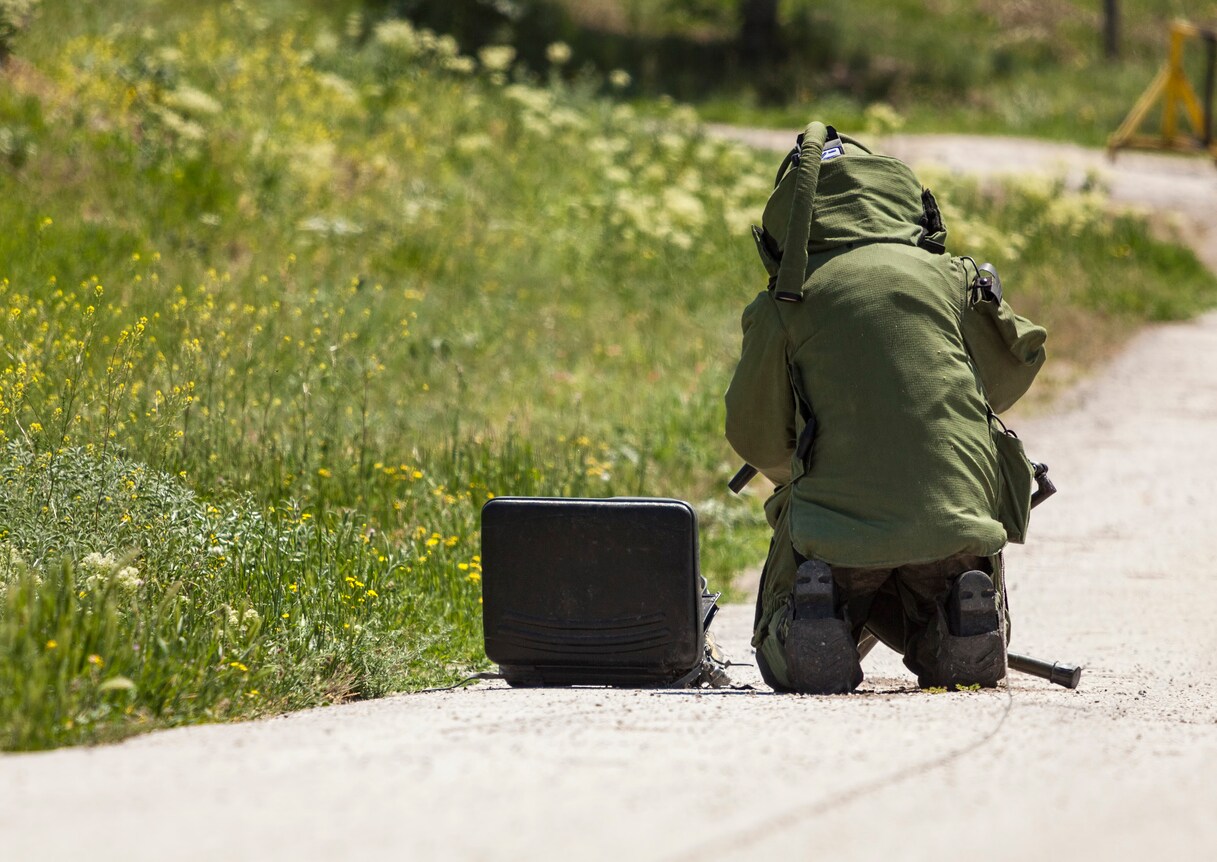 Rapid, precise identification of explosives is one of the key tasks for homeland security and public safety personnel, especially with the marked increase of improvised explosive device (IED) usage worldwide. Portable X-ray devices and trained canines assist first responders in determining the presence and location of explosives, but are not effective in the identification of unknown explosive materials. Instruments that can be used in the field to rapidly and accurately identify various explosives— and their precursors—are essential tools for bomb technicians responsible for the safety and security of the community.
Rapid, precise identification of explosives is one of the key tasks for homeland security and public safety personnel, especially with the marked increase of improvised explosive device (IED) usage worldwide. Portable X-ray devices and trained canines assist first responders in determining the presence and location of explosives, but are not effective in the identification of unknown explosive materials. Instruments that can be used in the field to rapidly and accurately identify various explosives— and their precursors—are essential tools for bomb technicians responsible for the safety and security of the community.
Some of these tools use Raman spectroscopy, a technology that enables users to safely analyze explosive materials through sealed translucent containers without disturbing the sample. This capability is particularly important for bomb technicians who want to avoid contact with a sample whenever possible. Chemical Identification analyzers using Raman can recognize thousands of potential explosives including: TATP (triacetone triperoxide), ammonium nitrate, TNT (trinitrotoluene), RDX (cyclonite) and HMTD (hexamethylene triperoxidediamine). Additionally, these instruments are capable of identifying explosive precursors in liquid mixtures including: hydrogen peroxide, fuel oil, acetone, sulfuric acid and more.
With Raman technology, an unknown sample of material is illuminated with monochromatic (single wavelength or single frequency) laser light, which can be absorbed, transmitted, reflected, or scattered by the sample. Light scattered from the sample is due to either elastic collisions of the light with the sample’s molecules (Rayleigh scatter) or inelastic collisions (Raman scatter). Whereas Rayleigh scattered light has the same frequency (wavelength) of the incident laser light, Raman scattered light returns from the sample at different frequencies corresponding to the vibrational frequencies of the bonds of the molecules in the sample.
Since the bonds for every molecule are different, the Raman scattering for every molecule is also different. Thus, a Raman spectral “fingerprint” can be generated by recording the intensity of light as a function of the frequency difference between the laser and Raman scattered light.
In a typical powdered substance, the intensity Raman scattering is roughly 10 million times less than the intensity of Rayleigh scattered light, and therefore very sensitive instrumentation is needed for Raman spectroscopy.
To aid in identification, the device collects the molecular fingerprint of an unknown sample, and then compares the substance against the onboard chemical library, typically providing results in a matter of seconds. Raman instruments excel at identifying liquids, gels, pastes and light colored solid materials. (Raman technology utilizes a focused laser, which can heat some energetic materials, so proper safety protocols should be followed to ensure operator safety.)
This technology can provide specific actionable data to first responders, EOD and CBRNE teams, because explosives, precursors and improvised explosive devices can be identified quickly, right in the hazard zone.
There are also instruments that utilize FTIR spectroscopy, and some that integrate both FTIR and Raman technologies in one instrument. You can read more about these technologies in the Application Note: Explosive Identification using Raman and FTIR






Wow, thank you for informing me that technology exists that can identify and inspect explosives without touching or disturbing the casing or the material inside. About a week ago, I was talking to my cousin, and she mentioned that there are some court cases that involve explosives. I feel like it would be difficult as a regular person on the jury to understand what explosive damage actually looks like and means. I wonder if there are professional services that help people understand complex explosives for a case.
Maybe our readers can help.